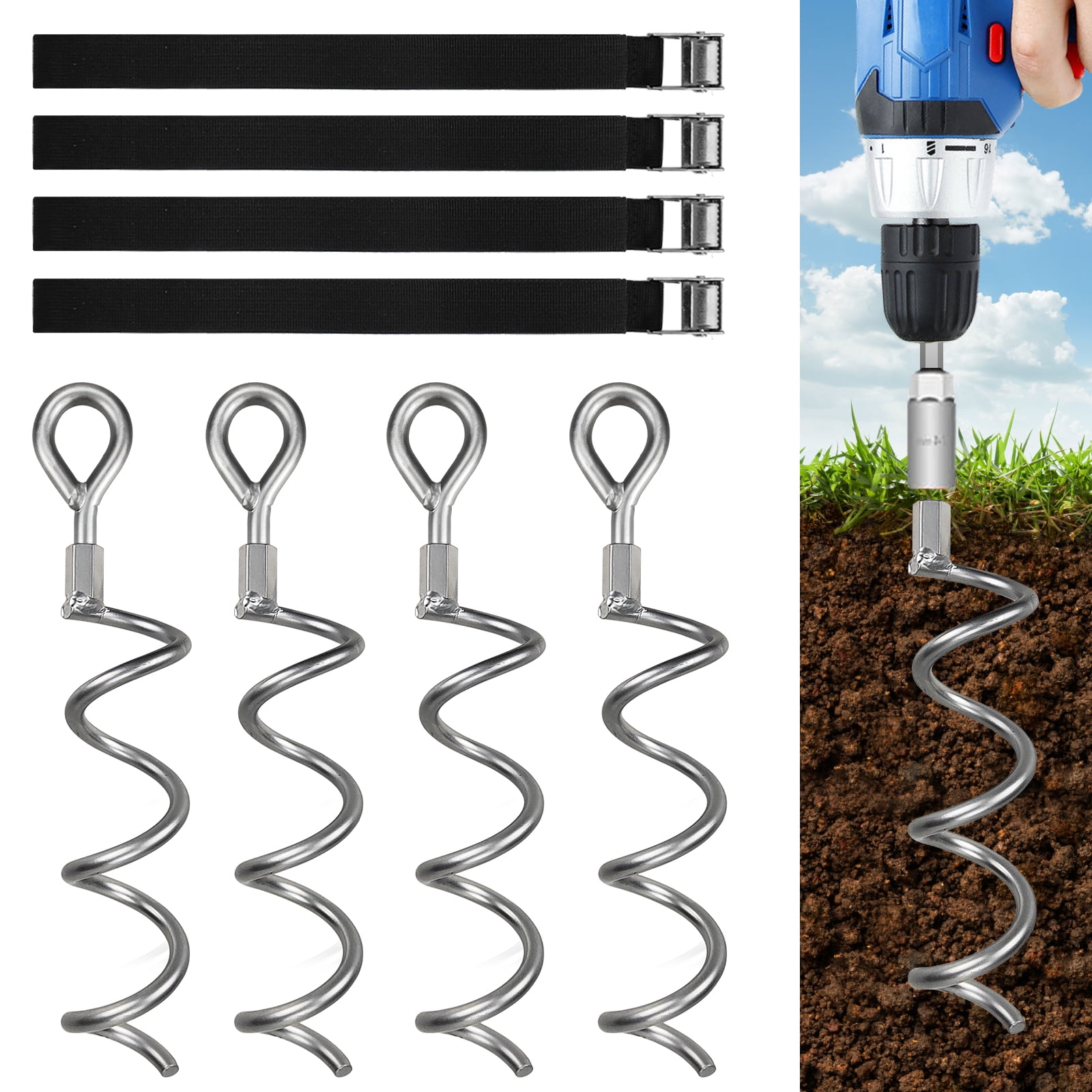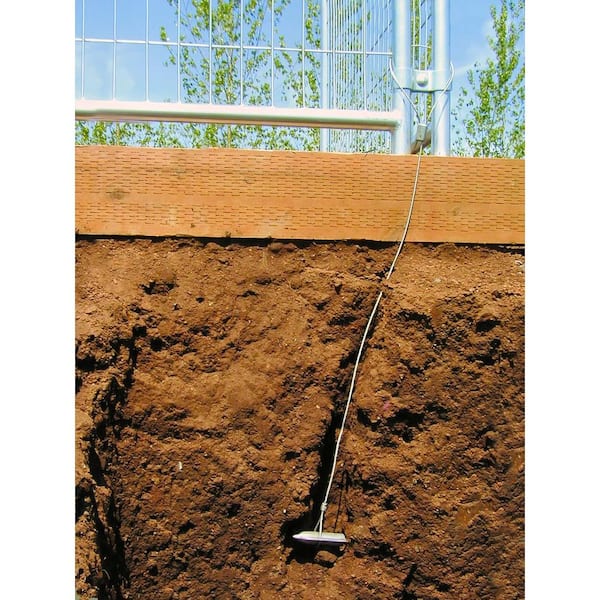Understanding the Significance of a Ground Anchor in Securing Heavy Equipment
Understanding the Significance of a Ground Anchor in Securing Heavy Equipment
Blog Article
Discover the Different Sorts Of Ground Support for Your Next Project
When getting started on a building or landscape design task, understanding the various kinds of ground anchors available is important to making sure both stability and resilience (Ground Anchor). From auger supports, which master diverse dirt problems, to stake supports developed for momentary installations, the options are numerous. Additionally, concrete and screw anchors present unique advantages in particular scenarios, while deadman supports are customized for applications calling for resistance to side forces. The selection of a proper anchor type can dramatically affect the overall success of your task, motivating further expedition into their respective benefits and applications.

Auger Anchors
Auger anchors are a preferred option in different construction and landscape design jobs because of their distinct style and efficient anchoring capacities. These supports contain a helical screw-like shaft that is driven into the ground, permitting for a secure and protected hold. The spiral design assists in simple installation and optimizes resistance against lateral pressures, making auger supports specifically reliable in applications such as fencing, short-lived structures, and erosion control.
The installment process of auger supports is relatively simple. They can be manually or mechanically set up, depending on the dimension and called for depth. This versatility allows for their usage in diverse soil conditions, from sandy to clayey terrains. Additionally, auger anchors can be conveniently eliminated and recycled, which contributes to their cost-effectiveness and sustainability.
One of the substantial benefits of auger anchors is their capability to distribute loads equally throughout the surrounding dirt, lowering the risk of soil disturbance and lessening ecological influence. Additionally, they are much less susceptible to loosening or heaving in time contrasted to conventional anchoring approaches. As a result, auger supports are an exceptional choice for tasks needing sturdy and trusted anchoring options.

Risk Anchors
When it comes to securing frameworks in a variety of outdoor applications, stake anchors supply a reputable and simple option. These supports are typically built from resilient materials such as steel or light weight aluminum, created to stand up to ecological anxieties while giving optimum security. Their straightforward design enables for quick setup, making them an optimal choice for momentary or permanent anchoring needs.
Stake supports are especially helpful in securing camping tents, covers, and various other light-weight frameworks versus wind and weather. They function by being driven right into the ground at an angle, developing a strong hold that withstands pull-out forces - Ground Anchor. The effectiveness of risk supports relies on a number of variables, consisting of soil kind, dampness content, and the angle of installation
For added safety and security, numerous risk supports include accessory points for bands or ropes, permitting for stress changes as required. In applications such as landscaping or building and construction, they can successfully support tools or structures on irregular surface. On the whole, stake anchors give a cost-efficient and functional option for safeguarding different outside installations, making them a recommended choice for contractors and DIY lovers alike.
Concrete Anchors
Concrete supports supply a robust remedy for securing structures to concrete surface areas, making certain security and safety and security in various applications. These supports are essential for projects varying from household constructions to large industrial setups. They are available in different types, consisting of growth supports, adhesive supports, and undercut anchors, each developed for certain load demands and environmental problems.
When set up,Expansion supports count on mechanical mechanisms to grip the concrete. They are optimal for medium to durable applications. Glue anchors use high-strength epoxy or material to bond the support to the concrete, supplying remarkable load-bearing capacities, especially in broken concrete situations. Undercut anchors develop a special form within the concrete, offering extraordinary holding power, particularly in applications where tensile lots are widespread.
Picking the ideal concrete support entails internet considering factors such as the weight of the tons, the condition of the concrete, and environmental problems. Proper setup methods are essential to make sure ideal efficiency and dependability. When executed correctly, concrete anchors dramatically boost the architectural stability of numerous jobs, making them crucial in modern-day building and construction methods. Understanding the certain requirements of your task will certainly aid in picking the ideal type of concrete anchor for the job.
Screw Anchors

Screw anchors are a functional securing solution that can be successfully used in a selection of applications where traditional concrete anchors might not be sufficient. These anchors contain a helical layout that enables them to be quickly driven right into the ground, making them ideal for usage in soil and various other substratums. Their distinct framework provides excellent holding power and resistance to pull-out pressures, making them suitable for many tasks, from landscaping to architectural assistance.
Among the key benefits of screw anchors is their convenience of installment. They call for very little devices and can typically be mounted without the demand for excavation, which saves both time and labor costs. In addition, screw supports can be eliminated and reused, providing a lasting solution for temporary applications.
Screw supports are especially advantageous in areas where soil conditions are testing, such as loose or sandy soils. Their capacity to be set up at varying midsts enables customization based on particular job needs. In general, screw supports give a efficient and reputable anchoring method, making them an exceptional selection for service providers and designers looking for reliable services for their jobs.
Deadman Anchors
Deadman anchors work as a durable option for supporting structures in tough problems, specifically where conventional securing approaches might drop brief. These supports are composed of big, heavy items hidden underground, which create resistance versus lateral pressures. The layout commonly involves a straight element, such as a block of concrete or a metal plate, buried in the soil, to which cables or straps are attached.
The effectiveness of deadman supports exists in their capacity to distribute loads over a larger area, minimizing the threat of failing in unsteady dirt conditions. They are specifically useful in applications such as keeping walls, temporary frameworks, and incline stabilization, where dirt movement can compromise the honesty of the structure.
Setup of deadman anchors requires mindful planning to ensure they are positioned at the appropriate depth and orientation, optimizing their load-bearing capacity. While they might need more labor and material than light-weight anchors, their integrity in adverse problems makes them vital for long-lasting tasks. Deadman supports are versatile and can be adapted to different Resources applications, making them a best selection for engineers encountering unique difficulties in their projects.
Conclusion
Auger supports succeed in diverse dirt problems, while stake supports fit short-term applications. For concrete surfaces, expansion and glue supports give trustworthy choices, and screw supports use flexibility in difficult terrains.
Furthermore, concrete and screw anchors existing distinct benefits in details situations, while deadman anchors are tailored for applications requiring resistance to side forces - Ground Anchor.Auger anchors are a prominent option in numerous building and construction and landscape design jobs due to their distinct design and efficient anchoring capabilities. They come in various types, consisting of expansion anchors, adhesive anchors, and undercut supports, each designed for particular tons requirements and environmental conditions
Sticky anchors make use of high-strength epoxy or material to bond the anchor to the concrete, providing remarkable load-bearing capabilities, especially in broken concrete situations. In general, screw supports supply a reputable and efficient anchoring technique, making click over here now them an exceptional selection for professionals and designers seeking reliable options for their tasks.
Report this page